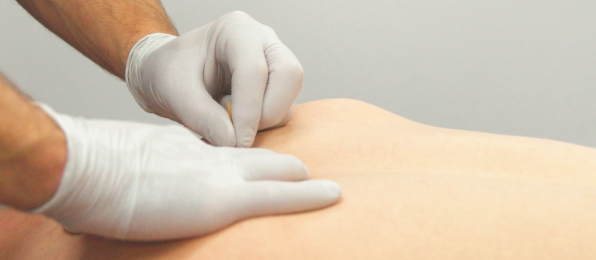

Are you experiencing pain associated with conditions like arthritis, nerve irritation, muscular strain, ligament strains and herniated discs? What if I told you there was a quick, easy way to get rid of your pain? Most patients would jump at the opportunity, but when I mention that it includes the use of needles, people all of a sudden become hesitant. I can’t blame them, but once they finally give trigger point dry needling a try, most are hooked!
Trigger point dry needling is a quick and effective treatment for musculoskeletal pain. The technique uses sterile, monofilament needles that are inserted into trigger points (muscle knots or spasms) to release the tightness and pain. That may sound scary, but there is very little pain from the needle itself, and the needle is only inserted for around 15-20 seconds.While there is typically slight pain associated once the needle is in the muscle, just about every one of my patients say that it’s worth it!
Many patients report a decrease in their pain immediately or within a day. Several patients demonstrate an improvement in their ability to move, walk, squat or bend immediately after dry needling. If that isn’t awesome, I’m not sure what is!
Dry needling is very effective, but it is just as important to perform follow up treatments that are given by your physical therapist. Those may include stretching, strengthening, postural or other corrective exercises to help prevent the pain from returning.
The following is a list of injuries that dry needling can help:
• Muscle strain
• Tendonitis
• Back pain
• Headaches
• Chronic pain
• Acute pain
• Plantar fasciitis
Dry needling can help many injuries! If this is something that interests you, call or make an appointment with one of our 19 clinics across Connecticut today!
